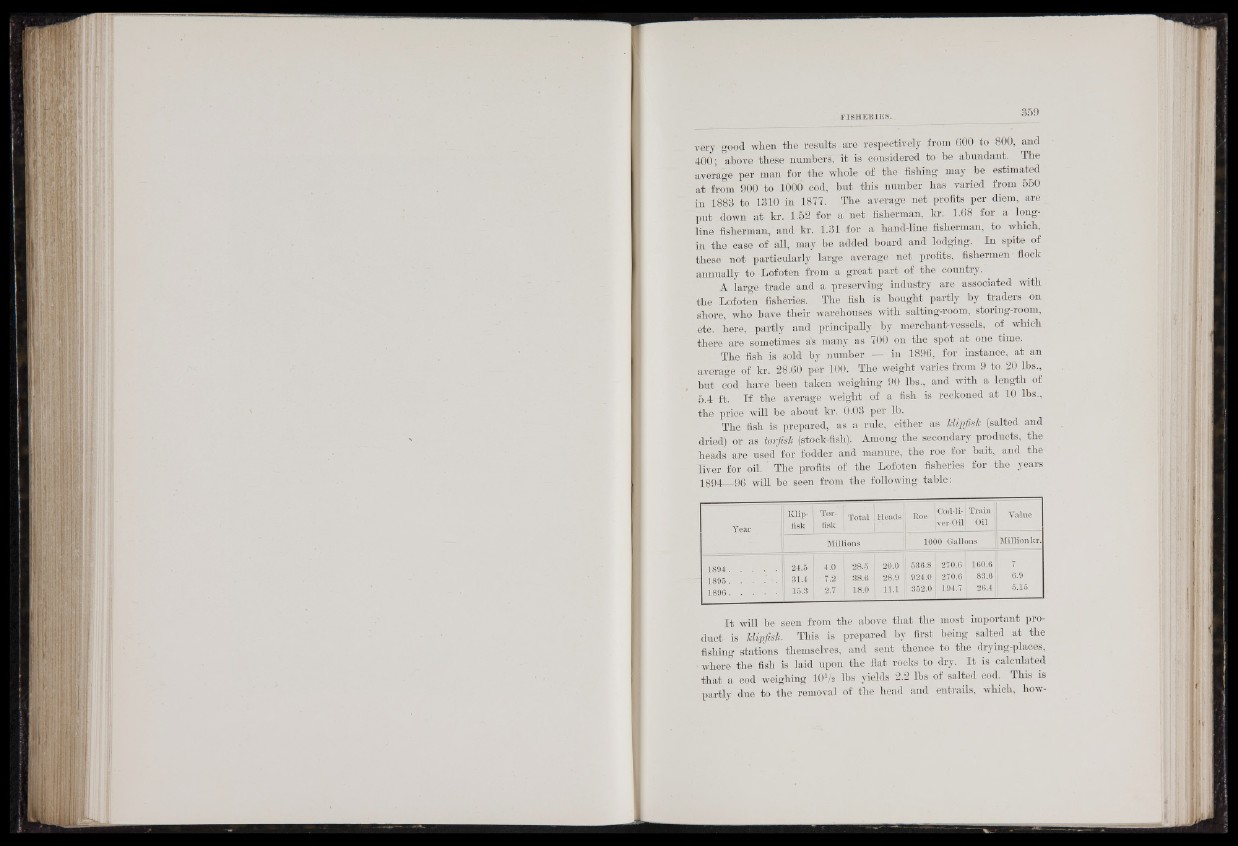
lili lili 1 ■lili
í I IB
very good when the results, are respectively from 600 to 800, and
400; above these numbers, it is considered to be abundant. The
average per man for the whole of the fishing may be estimated
at from 900 to 1000 cod, but this number has varied from 550
in 1883 to 1310 in 1877. The average net profits per diem, are
put down at kr. 1.52 for a' net fisherman, kr. 1.68 for a long-
l i n e fisherman, and kr. 1.31 for a hand-line fisherman, to which,
in the case of all, may be added board and lodging. In spite of
these not particularly large average net profits, fishermen- flock
annually to Lofoten from a great part of the country. ^
A large trade and a preserving industry are associated with
the Lofoten fisheries. The fish is bought partly by traders on
shore, who have their warehouses with salting-room, storing-room,
etc. here, partly and principally by merchant-vessels, of which
there are sometimes ah many as 700 on the spot at one time.
The fish is sold by number '—-fin 1896, for 'instance, at an
average of kr. 28.60 per 100. The weight varies from 9 to 20 lbs.,
but cod have been taken weighing 90 lbs., and with a length of
5.4 ft. If the average weight of a fish is reckoned at 10 lbs.,
the price will be about kr. 0.03 per lb.
The fish is prepared, as a rule, either as IcUpfish (salted and
dried) or as terfisk (stock-fish): Among the secondary products, the
heads are used for fodder and manure, the roe for bait, and the
liver for oil. ’ The profits of the Lofoten fisheries for the years
1894—96 will be seen from the following table:
Year
Klipfisk
Terfisk
Total Heads Roe Cod-li- Train Value
ver-Oil Oil
Millions 1000 Gallons || Million kr .
•1894. . . • • 24.5 4.0 28.5 20.0 536.8 270.6 160.6 7
1895. 31.4 •7.2 38.6 28.9 924.0 270.6 83.61 6.9
1896 ..................... 15.3 2.7 18.0 11.1 352.0 194.7 26.4 5.15
I t will be seen from the above that the most important product
is EipfisTc. This is prepared by first being salted at the
fishing stations themselves, and sent thence to the drying-places,
■where the fish is laid upon the flat rocks to dry. I t is calculated
that a cod weighing lOVa lbs yields 2.2 lbs of salted cod. This is
partly due to the removal of the head and entrails, which, how